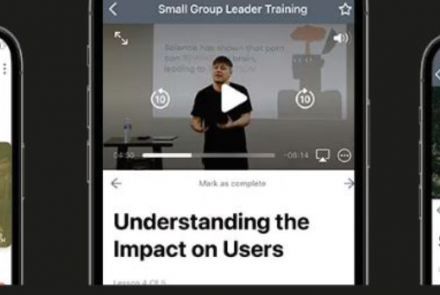The porn pandemic
One of the recent open day lectures run by Oak Hill Theological College, was on the theme of pornography. This was given by Robin Barfield, a children’s and youth worker.
The reality
Robin began by listing some statistics on pornography use:
- 12% of all websites are pornographic (4.2 million Sexually Explicit Internet Material (SEIM) websites existed in 2015)
- 42% of all internet users (male, female, young and old) view SEIM
- 10% of the 42% are viewing SEIM daily
Men are more likely to watch what is called “gonzo porn”, which is viewing the raw act of sex, while women often want more of a storyline when they are watching porn.
What do we need to remember about porn use?
Firstly, using porn can affect our body image. Men aren’t normally accustomed to seeing other men’s body shapes and therefore porn can distort their body image. Women aren’t affected as much as men, as woman are more used to seeing the shapes of other women’s bodies in magazines and on social media. Secondly “centrefold syndrome” can arise, where women are objectified, especially when men view SEIM. This then can also give room to “trophyism”, especially seen in celebrity culture. This is where a woman is used as a trophy, as it were, alongside a famous personality. Sadly, this culture of “big name, woman as trophy” can be seen in American evangelicalism. This abuse of women can breed damaging and negative attitudes towards them from men - that they are to be used sexually, rather than loved.
These facts and outcomes can be quite shocking, especially when one statistic says that the average age of exposure to SEIM is 11. This suggests that many children have seen SEIM before that young age.
How do we respond?
It can feel quite upsetting to reflect on this data. Perhaps we know people in our churches and youth groups who may struggle in this area. We ourselves may also be addicted to porn. There is a need to remember that our bodies aren’t entirely who we are. It’s also what we are inside that matters. Nevertheless, reflecting on the book of Genesis, we see that we are created beings. We need to be those who reinforce the belief that bodies are good things and that we should look after them. We are made in the image of God and are living sacrifices to Him. SEIM is impersonal and therefore separates the body from the personality. Remember our feelings and longings are part of the Fall and sometimes these are broken. Let us not believe the lie, “You are what you feel”. Ultimately pornography is dehumanising. It removes the image of God from people. People become things to be used, not individuals to be loved and cherished.
Pastoral care
Robin then finished his talk by giving some practical tips:
- Gate the eyes - block porn. People need to stop watching it before the heart can heal. Robin explained that people hate themselves for using porn and are scared to tell people they struggle in this area.
- Heal the heart. It is necessary to show plenty of grace. People will feel very shamed. This sin is forgivable; we do not adhere to the purity culture. Life is not over when we sin in this area. We need to bring darkness into the light. Remember that whoever is struggling is a child of God and is saved by grace – saved by Jesus.
One way of healing the heart is to delight in God, loving what He loves and hating what He hates. As Thomas Watson says, “Until sin be bitter, Christ will not be sweet”. Finally, Robin reminded people of the difference between finite and infinite pleasure - SEIM is finite and Christ infinite.
What do churches need to do?
We need to TALK about the dangers of porn, in our families, youth groups and small groups. Russell Moore says, “The most dangerous sins to our Christian lives are the ones we think are anonymous, the ones we think no-one knows about, so we think get away with them”. This means building a culture of honesty within church, which can be helped by older members walking with younger members in their struggles. Churches should celebrate biblical marriage and ultimately the marriage of Jesus and His Church, in order to lay the foundation for healthy and fruitful sexual relationships.
This was a helpful lecture and gave insight into pornography. What I found particularly useful was how men and women view pornography differently and how we can pastorally help people who struggle.
To access the original lecture click here.
This article was originally published in the Winter 2023 edition of the TFT magazine, Ascend. Click the button below to download your copy.
Download the Winter 2023 edition of Ascend






